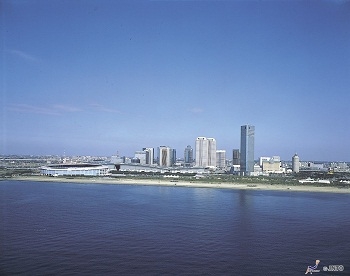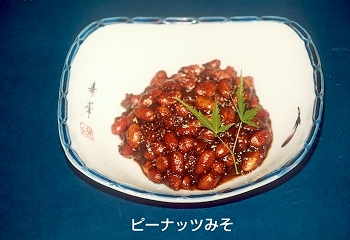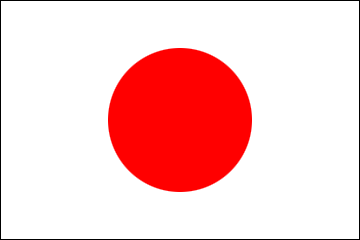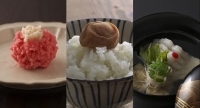Japanese Kitchen
2020/11/13
Having visited all four main islands of Japan in our Japanese Kitchen series (in the last edition we were in Ehime on the island of Shikoku), we travel back to the main land of Honshu, just next to the captial Tokyo, to Chiba Prefecture. Perhaps known more for being the location of Tokyo Disneyland and many 'bedroom towns' for the capital city, Chiba is not so recognised as a destination for 'gourmet tourism'. However, it is worth noting that Chiba Prefecture produces Japan's overall third-highest agricultural output. Only Hokkaido produces more agricultural products overall, and Chiba leads Hokkaido in vegetable production.
Rakkasei-miso (Peanut-miso)
by Yuriko Akiyama
originally published in November 2014
Chiba is one of the prefectures adjacent to Tokyo. One of its main cities is Ichikawa. I have spent most of my life there although, like my parents, I am not originally from there. The district of Camberwell in South London reminds me somewhat of Ichikawa.
 In terms of size, Chiba is ranked 28th among Japan’s 47 prefectures. I feel it resembles Norfolk to a certain extent, although it is a little smaller. It is a middling prefecture in most respects – nothing special really, although I love it as for me it is home! It is known for its vegetables and seafood, which it supplies to Tokyo and other areas. It is particularly renowned for its peanuts and Japanese pears, of which it is Japan’s leading producer. Ichikawa, which is said to have begun cultivating pears in the 18th century, plays a central role in this regard.
In terms of size, Chiba is ranked 28th among Japan’s 47 prefectures. I feel it resembles Norfolk to a certain extent, although it is a little smaller. It is a middling prefecture in most respects – nothing special really, although I love it as for me it is home! It is known for its vegetables and seafood, which it supplies to Tokyo and other areas. It is particularly renowned for its peanuts and Japanese pears, of which it is Japan’s leading producer. Ichikawa, which is said to have begun cultivating pears in the 18th century, plays a central role in this regard.
As its housing and commodity prices are generally lower than in central Tokyo, Chiba prefecture is home to large numbers of commuters. Furthermore, if you fly to Tokyo, Chiba will be the first part of Japan you see as Narita airport is based there even though your ticket says “Tokyo”. Not surprisingly, Tokyo Disneyland is also in Chiba. We have an official prefectural mascot, a little red dog called “Chiba-kun”, who forms the shape of the Boso peninsula when he stands.
The dish I would like to introduce, peanut-miso, uses one of Chiba’s most popular products – peanuts. Cultivation of peanuts in Chiba started in the 1870s. The soil there is perfectly suited to peanuts, and these days 70% of domestically-grown peanuts are from Chiba. If you have a chance to visit Chiba in autumn, try boiled peanuts – for which freshly-harvested ones should be used. With their unique, delicate flavour, they are a true speciality of Chiba and are little known elsewhere.
Peanut-miso is widely available in supermarkets once you have stepped into Chiba, though surprisingly not that favoured on the other side of the River Edo. It is popular among people of all ages. Just imagine sticky honey-roasted peanuts with the quintessentially Japanese taste of miso – sweet but a little salty. You can enjoy just a teaspoonful on a bowl of hot steamed rice, or even have it cold with your packed lunch, and for adults it is a popular kind of otsumami, a kind of savoury snack enjoyed with drinks.
originally published in November 2014
Chiba is one of the prefectures adjacent to Tokyo. One of its main cities is Ichikawa. I have spent most of my life there although, like my parents, I am not originally from there. The district of Camberwell in South London reminds me somewhat of Ichikawa.
 In terms of size, Chiba is ranked 28th among Japan’s 47 prefectures. I feel it resembles Norfolk to a certain extent, although it is a little smaller. It is a middling prefecture in most respects – nothing special really, although I love it as for me it is home! It is known for its vegetables and seafood, which it supplies to Tokyo and other areas. It is particularly renowned for its peanuts and Japanese pears, of which it is Japan’s leading producer. Ichikawa, which is said to have begun cultivating pears in the 18th century, plays a central role in this regard.
In terms of size, Chiba is ranked 28th among Japan’s 47 prefectures. I feel it resembles Norfolk to a certain extent, although it is a little smaller. It is a middling prefecture in most respects – nothing special really, although I love it as for me it is home! It is known for its vegetables and seafood, which it supplies to Tokyo and other areas. It is particularly renowned for its peanuts and Japanese pears, of which it is Japan’s leading producer. Ichikawa, which is said to have begun cultivating pears in the 18th century, plays a central role in this regard.As its housing and commodity prices are generally lower than in central Tokyo, Chiba prefecture is home to large numbers of commuters. Furthermore, if you fly to Tokyo, Chiba will be the first part of Japan you see as Narita airport is based there even though your ticket says “Tokyo”. Not surprisingly, Tokyo Disneyland is also in Chiba. We have an official prefectural mascot, a little red dog called “Chiba-kun”, who forms the shape of the Boso peninsula when he stands.
The dish I would like to introduce, peanut-miso, uses one of Chiba’s most popular products – peanuts. Cultivation of peanuts in Chiba started in the 1870s. The soil there is perfectly suited to peanuts, and these days 70% of domestically-grown peanuts are from Chiba. If you have a chance to visit Chiba in autumn, try boiled peanuts – for which freshly-harvested ones should be used. With their unique, delicate flavour, they are a true speciality of Chiba and are little known elsewhere.
Peanut-miso is widely available in supermarkets once you have stepped into Chiba, though surprisingly not that favoured on the other side of the River Edo. It is popular among people of all ages. Just imagine sticky honey-roasted peanuts with the quintessentially Japanese taste of miso – sweet but a little salty. You can enjoy just a teaspoonful on a bowl of hot steamed rice, or even have it cold with your packed lunch, and for adults it is a popular kind of otsumami, a kind of savoury snack enjoyed with drinks.
Rakkasei-miso recipe
Ingredients
 Instructions
Instructions
1. Heat the cooking oil in a frying pan and slowly roast the peanuts on a low heat for 15 - 20 minutes, taking care not to burn the peanuts.
2. When the peanuts are well roasted, add the miso paste and sugar and mix well.
3. Add the rice wine.
4. Your peanut-miso is ready to be served.
- Peanuts - 100g
- Miso paste - 80g
- Sugar - 60g
- Rice wine - 1 tablespoon
- Cooking oil - As required
 Instructions
Instructions
1. Heat the cooking oil in a frying pan and slowly roast the peanuts on a low heat for 15 - 20 minutes, taking care not to burn the peanuts.
2. When the peanuts are well roasted, add the miso paste and sugar and mix well.
3. Add the rice wine.
4. Your peanut-miso is ready to be served.

